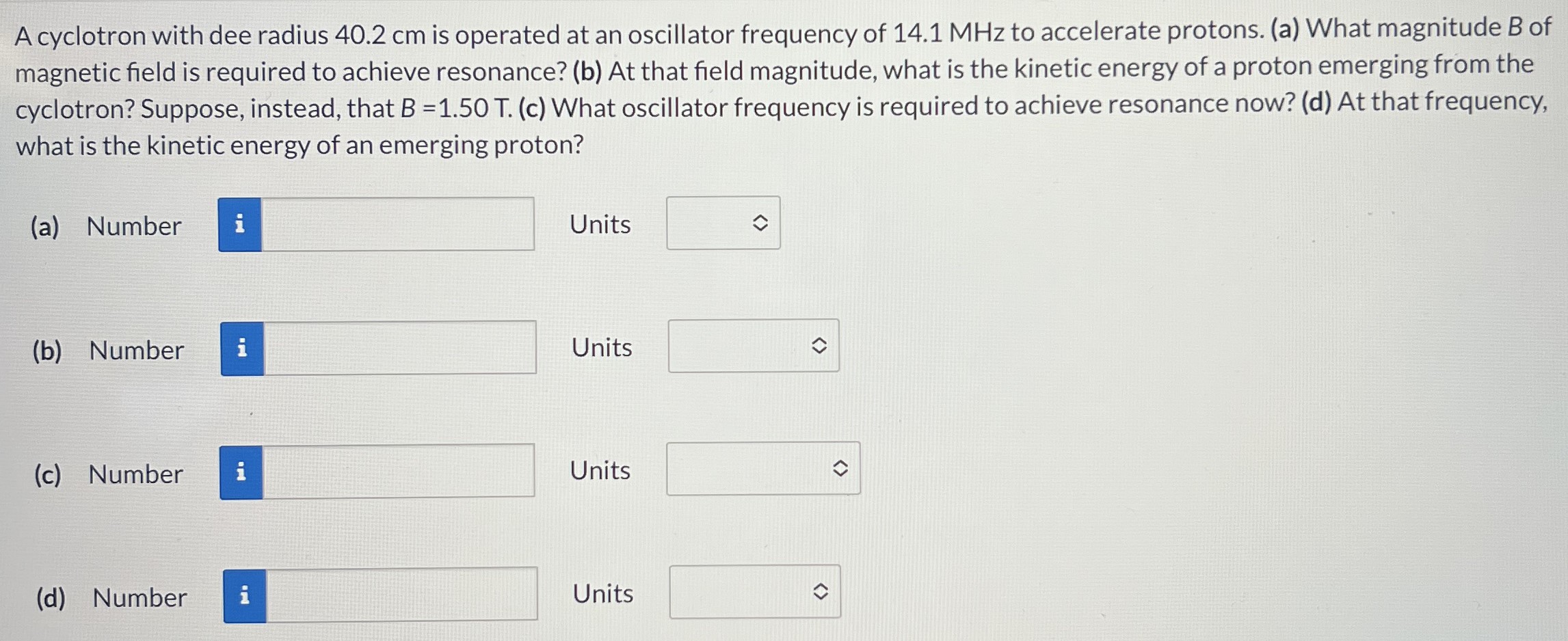A cyclotron with dee radius 40.2 cm is operated at an oscillator frequency of 14.1 MHz to accelerate protons. (a) What magnitude B of magnetic field is required to achieve resonance? (b) At that field magnitude, what is the kinetic energy of a proton emerging from the cyclotron? Suppose, instead, that B = 1.50 T. (c) What oscillator frequency is required to achieve resonance now? (d) At that frequency, what is the kinetic energy of an emerging proton? (a) Number Units (b) Number Units (c) Number Units (d) Number Units
